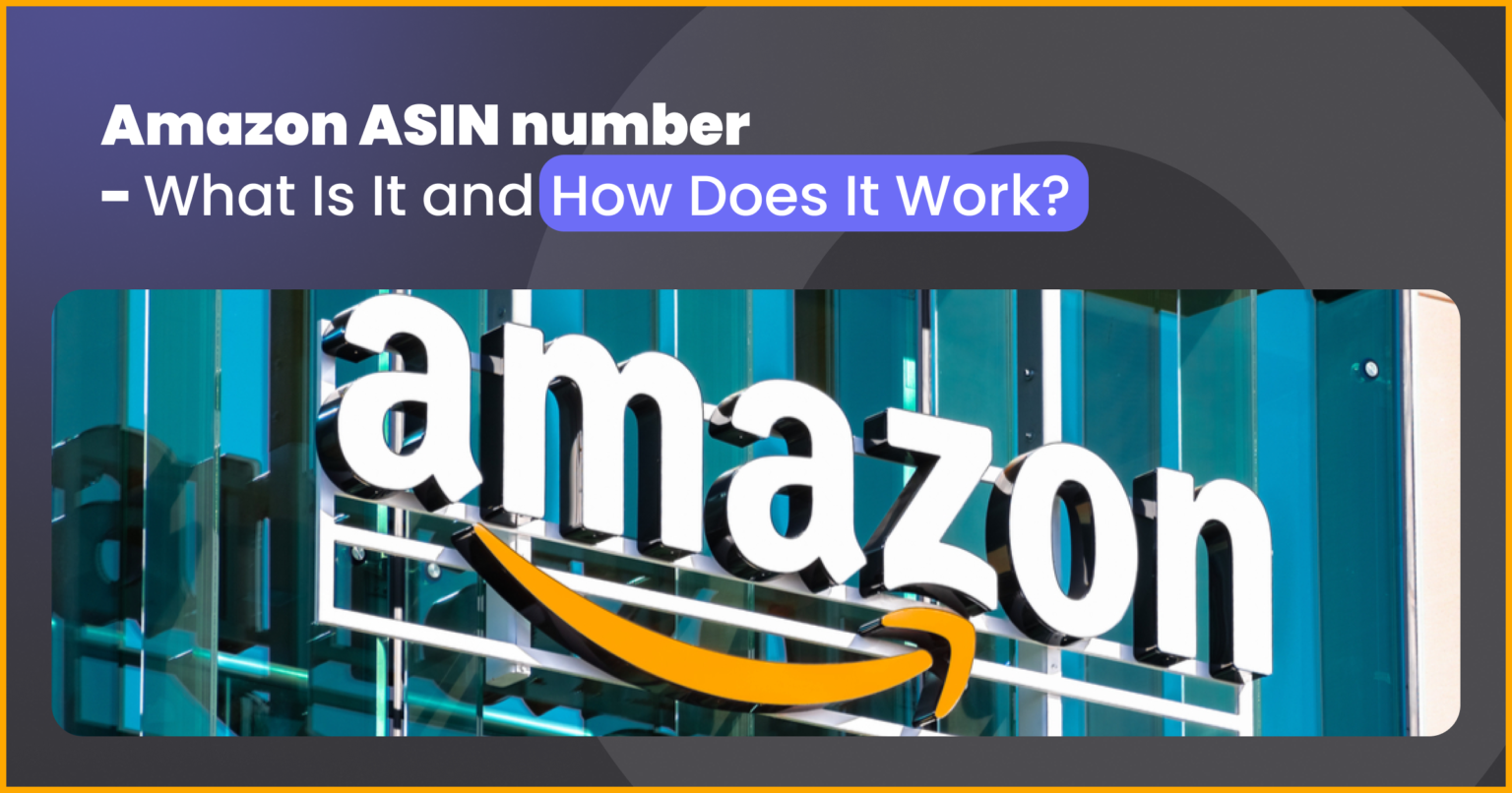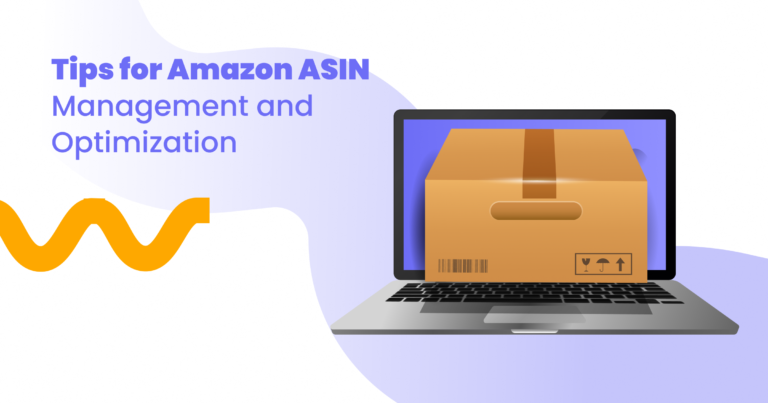Amazon ASIN – What does it mean for your business?

The Importance of Amazon in the World of E-Commerce
Amazon, the e-commerce giant, has revolutionized the way we shop and conduct business online. With its vast marketplace, millions of products, and unparalleled customer reach, Amazon has become a cornerstone for businesses looking to expand their digital footprint. For medium and large enterprises, leveraging Amazon’s platform can mean the difference between stagnation and exponential growth.
In the ever-evolving world of e-commerce, Amazon stands out not just for its size, but for its innovation and influence. The platform’s sophisticated logistics, cutting-edge technology, and customer-centric approach create an environment where businesses can thrive. Whether you’re a seasoned e-commerce veteran or a traditional business eyeing online expansion, understanding Amazon’s ecosystem is crucial.
One of the key elements that make Amazon’s marketplace so effective is the ASIN or Amazon Standard Identification Number. This unique identifier is more than just a string of characters—it’s a gateway to unlocking Amazon’s full potential for your business. In this article, we will explore what ASIN means for your business, how it works, and why mastering it is essential for achieving success on Amazon.
What is Amazon ASIN?
Definition and Essence
The Amazon Standard Identification Number, or ASIN, is a unique identifier assigned to each product listed on Amazon. Think of it as a digital fingerprint for every item, allowing Amazon to efficiently manage and track its vast inventory. An ASIN is a 10-character alphanumeric code that helps Amazon categorize and differentiate between millions of products, ensuring that each item is easily identifiable.
For businesses, understanding the essence of ASIN is crucial. It’s not just about having a product listed; it’s about how that product is managed, found, and purchased. An ASIN streamlines the entire process, from listing your product to tracking its performance and sales. By grasping the significance of ASINs, you can better navigate Amazon’s marketplace and optimize your listings for maximum visibility and profitability.
Which Products Have Their Own Unique ASIN
Every product sold on Amazon is assigned a unique ASIN, making it an essential part of the platform’s infrastructure. This includes:
- Books: Interestingly, books use their ISBN (International Standard Book Number) as their ASIN.
- Electronics: Each model of a gadget or appliance gets a unique ASIN.
- Apparel: Different sizes and colors of the same clothing item each have their ASINs.
- Home Goods: From kitchen appliances to furniture, every item is uniquely identified.
- Beauty Products: Each variation, such as size or color, has a different ASIN.
This system ensures that no two products are confused, maintaining clarity and accuracy in Amazon’s vast marketplace.
Examples of ASINs on the Amazon Platform
To illustrate how ASINs function, let’s look at some examples:
- Books: The book “Becoming” by Michelle Obama has the ASIN B07DXK9M5Z.
- Electronics: The Apple AirPods Pro has the ASIN B07ZPC9QD4.
- Apparel: A men’s black Nike T-shirt in size medium might have the ASIN B08DL6ZY1M, while the same T-shirt in size large could have a different ASIN.
- Home Goods: A popular Instant Pot model has the ASIN B00FLYWNYQ.
These examples show how diverse products, even those with variations, are distinctly identified, simplifying the shopping and selling process on Amazon. For businesses, knowing how to locate and utilize these ASINs can significantly impact product management and sales strategies.
Why is Amazon ASIN Important for Your Business?
Uniqueness and Product Identification
The Amazon Standard Identification Number (ASIN) ensures that each product on Amazon has a unique identifier, which is crucial for accurate product identification. For businesses, this means your product stands out distinctly among millions of listings. The ASIN helps prevent confusion and mix-ups with similar items, safeguarding your brand’s integrity. By leveraging ASINs, businesses can efficiently manage their inventory, track sales, and ensure that customers receive the correct products, enhancing overall customer satisfaction.
Simplify Search and Comparison
ASINs play a pivotal role in simplifying the search and comparison process on Amazon. When customers search for a product, ASINs help Amazon’s algorithm quickly locate the exact item, including its variations such as size, color, and model. This precision not only improves the shopping experience but also increases the chances of your product being found by potential buyers. For businesses, this means higher visibility and better chances of conversion as customers can easily find and compare your products against competitors, making informed purchasing decisions.
Impact on Product Rating and Visibility
ASINs significantly influence product ratings and visibility on Amazon. Each ASIN aggregates reviews, ratings, and sales data, which Amazon uses to determine a product’s ranking in search results. High ratings and positive reviews linked to your ASIN can boost your product’s visibility, attracting more customers and driving sales. Conversely, managing negative reviews under a specific ASIN is also easier, allowing businesses to address issues promptly and maintain a positive brand image.
Moreover, understanding how ASINs impact product visibility can help businesses optimize their listings. By using relevant keywords, high-quality images, and compelling descriptions linked to the ASIN, you can improve your product’s ranking on Amazon. This strategic approach ensures that your products are not only easily identifiable but also more likely to appear in top search results, maximizing your reach and conversion potential.
In essence, mastering the use of ASINs can significantly enhance your business’s performance on Amazon, providing a competitive edge in the crowded e-commerce marketplace.
How to Use Amazon ASIN in Your Business?
Product Listing Optimization
Optimizing your product listings using ASINs is key to maximizing visibility and sales on Amazon. Here’s how to do it effectively:
- Accurate Product Information: Ensure that every detail about your product is accurate and comprehensive. This includes the title, description, bullet points, and specifications. An accurate ASIN listing helps customers make informed decisions and reduces the likelihood of returns.
- High-Quality Images: Use high-resolution images that showcase your product from multiple angles. Including lifestyle images and infographics can also enhance the appeal of your listing.
- Relevant Keywords: Incorporate relevant keywords in your product title, description, and backend search terms. This improves the chances of your product appearing in search results.
- Competitive Pricing: Analyze competitors’ pricing strategies and set a competitive price for your product. Ensure that your price reflects the value and quality of your product.
- Customer Reviews and Q&A: Encourage satisfied customers to leave positive reviews and respond promptly to questions. This builds trust and enhances your product’s credibility.
Marketing Strategies Using ASIN
Using ASINs in your marketing strategies can boost your product’s visibility and sales on Amazon. Here are some effective tactics:
- Amazon Sponsored Products: Utilize Amazon’s Sponsored Products advertising to promote your listings. By targeting specific ASINs, you can increase the visibility of your products to potential buyers who are already interested in similar items.
- Product Bundling: Create bundles of complementary products with unique ASINs. This not only provides value to customers but also increases your average order value.
- Promotions and Discounts: Leverage promotions and discounts linked to specific ASINs to attract more customers. Time-limited deals can create a sense of urgency and drive sales.
- Cross-Selling and Upselling: Use ASINs to identify opportunities for cross-selling and upselling. Recommend related products that customers might be interested in based on their purchasing behavior.
- Email Marketing: Include ASINs in your email marketing campaigns to direct customers to specific products. Personalized recommendations based on past purchases can enhance customer engagement and loyalty.
By strategically using ASINs in your product listings and marketing efforts, you can significantly enhance your business’s presence on Amazon. This approach not only drives traffic and sales but also helps build a strong, recognizable brand in the competitive e-commerce landscape.
Tips for Amazon ASIN Management and Optimization
Listing Update and Optimization
Regularly updating and optimizing your Amazon listings is crucial for maintaining high visibility and maximizing sales. Here are some tips:
- Monitor and Refresh Content: Regularly review your product titles, descriptions, bullet points, and images. Update them to reflect any changes in the product or market trends. Refreshing content keeps your listings relevant and engaging.
- Leverage Enhanced Brand Content (EBC): If you’re a brand-registered seller, utilize Enhanced Brand Content or A+ Content to add rich media to your listings. This can include detailed descriptions, high-quality images, and comparison charts, which can significantly improve conversion rates.
- Respond to Customer Feedback: Use customer reviews and Q&A sections to identify areas for improvement in your listings. Address common concerns and highlight product features that customers appreciate.
- Optimize for Mobile: Ensure that your listings are mobile-friendly. Many customers shop on their mobile devices, so your product details, images, and calls-to-action should be easily readable and navigable on smaller screens.

Use of Keywords and Phrases
Effectively using keywords and phrases in your Amazon listings is essential for improving search rankings and attracting the right audience. Here’s how to do it:
- Keyword Research: Conduct thorough keyword research to identify high-volume and relevant keywords for your product.
- Strategic Placement: Incorporate these keywords naturally into your product title, bullet points, description, and backend search terms. Avoid keyword stuffing, as it can negatively impact readability and user experience.
- Long-Tail Keywords: Use long-tail keywords to target specific customer queries. These keywords often have lower competition and can help attract highly targeted traffic.
- Monitor and Adjust: Regularly analyze the performance of your keywords and make adjustments as needed. Track which keywords are driving traffic and conversions, and refine your listings accordingly.
Data Analysis and Performance Metrics
Analyzing data and performance metrics is key to understanding how your ASINs are performing and identifying areas for improvement. Here are some strategies:
- Sales Data: Monitor your sales data to identify trends and patterns. Look at metrics such as units sold, revenue, and average order value to gauge your product’s performance.
- Traffic and Conversion Rates: Analyze traffic data to see how many visitors your listings are attracting. Track conversion rates to understand how effectively your listings are converting visitors into buyers.
- Customer Feedback and Reviews: Pay attention to customer reviews and feedback. Analyze common themes in positive and negative reviews to identify strengths and areas for improvement in your products and listings.
- Competitor Analysis: Regularly review competitor listings to see how they’re performing. Identify what’s working for them and consider how you can apply similar strategies to your listings.
- Advertising Performance: If you’re using Amazon’s advertising tools, analyze the performance of your ad campaigns. Look at metrics like click-through rates (CTR), cost-per-click (CPC), and return on ad spend (ROAS) to optimize your advertising strategy.
By effectively managing and optimizing your ASINs, you can ensure that your products remain competitive and attractive to customers on Amazon. This comprehensive approach will help drive traffic, increase sales, and build a strong presence in the marketplace.
Conclusion
In the dynamic and highly competitive world of e-commerce, leveraging Amazon’s platform can significantly propel your business forward. Understanding and utilizing Amazon ASINs is a critical component of this strategy. ASINs ensure that your products are uniquely identified, easily searchable, and effectively managed within Amazon’s vast marketplace.
By optimizing your product listings with accurate information, high-quality images, and relevant keywords, you can enhance your products’ visibility and appeal. Implementing strategic marketing efforts that utilize ASINs, such as sponsored products, product bundling, and targeted promotions, can further boost your sales and brand recognition.
Regularly updating and optimizing your listings, along with analyzing key performance metrics, ensures that your business remains agile and responsive to market trends. By keeping your listings current and strategically using keywords, you can maintain a competitive edge and attract more potential buyers.
Ultimately, mastering the use of Amazon ASINs empowers your business to thrive on one of the world’s largest e-commerce platforms. Whether you are looking to expand your digital footprint, increase your customer base, or drive sales, understanding the intricacies of ASINs and implementing best practices for their management and optimization will set you on the path to success.
Profit Whales is here to support you in navigating the complexities of Amazon’s ecosystem, providing expert guidance and innovative solutions to help your business achieve its full potential on the platform. Embrace the power of ASINs, and unlock new opportunities for growth and profitability in the ever-evolving e-commerce landscape.

FAQ
What is the purpose of ASIN?
The purpose of the Amazon Standard Identification Number (ASIN) is to uniquely identify products within Amazon’s vast inventory. This 10-character alphanumeric code ensures efficient cataloging, enabling customers to easily find and differentiate products. For businesses, ASINs streamline inventory management, improve searchability, and enhance sales tracking.
What is Amazon ASIN classification?
Amazon ASIN (Amazon Standard Identification Number) classification is a unique 10-character alphanumeric code assigned to each product listed on Amazon. It helps in organizing and identifying products within Amazon’s vast marketplace, ensuring accurate tracking, inventory management, and searchability for both sellers and customers. This classification system streamlines the shopping experience by enabling precise product searches and comparisons.
What does ASIN mean business?
An ASIN, or Amazon Standard Identification Number, is a unique identifier assigned to every product on Amazon. For businesses, understanding and utilizing ASINs is crucial for managing inventory, optimizing listings, and improving search visibility on the platform. This can lead to increased sales and a stronger presence in the competitive Amazon marketplace.
Do I need an ASIN number to sell on Amazon?
Yes, you need an ASIN (Amazon Standard Identification Number) to list and sell products on Amazon. The ASIN is a unique identifier that helps customers find your products easily on the platform. If your product is already listed, it will share the existing ASIN; if it’s a new product, Amazon will assign a new ASIN to it.
Can I create an ASIN?
Creating an ASIN (Amazon Standard Identification Number) is not something sellers can do directly. When you list a new product on Amazon that does not already exist in their catalog, Amazon generates an ASIN for that product. This ensures that each product has a unique identifier, simplifying inventory management and product tracking on the platform.





